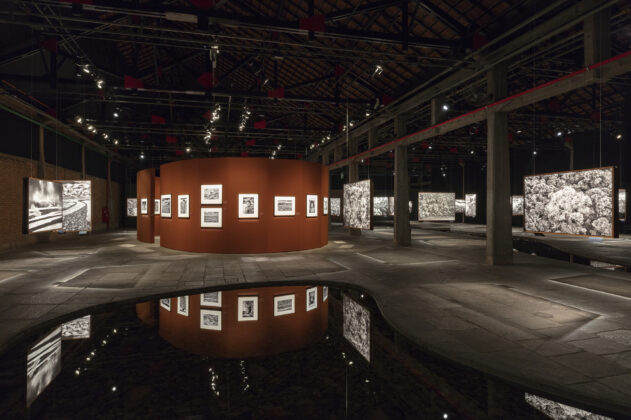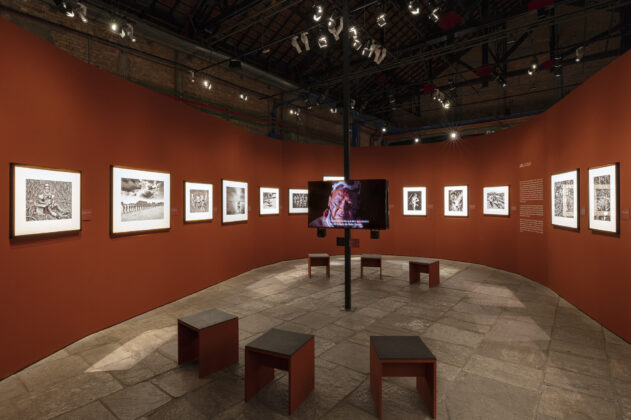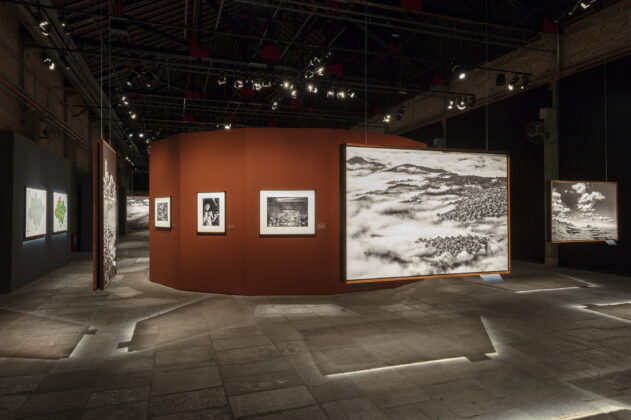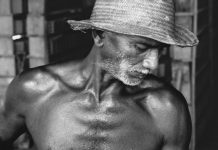“Why did I return to the Amazon?”, asks Sebastião Salgado in the presentation of his recent work named after “the forest that extends to infinity”. Now, eight years after the start of his venture in the Amazon, the photographer manages to answer that he returned not for the dark side – the fires, deforestation, the poisoning of rivers by miners, drug trafficking – but to savor the incomparable beauty of the Amazon and renew his bond with the native peoples who care for the forest so diligently.
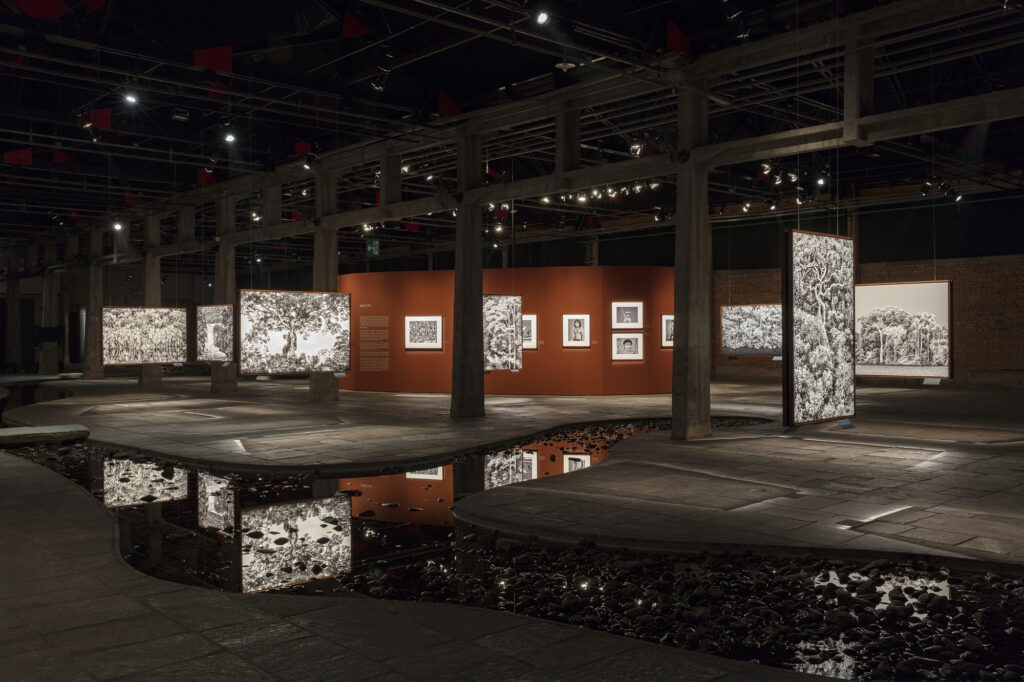
“When I started photographing the Amazon, the region was by no means in evidence. I thought I had to do the photographs. I felt the biome threatened and I saw a very big difference between the Amazon of the 1980s and then the Amazon of the early 2000s”. Without a specific project in mind (whether it was the publication or the traveling exhibition that is now at Sesc Pompeia, in São Paulo), Salgado’s urgency took him to travel through the forest from the state of Pará to Amazonas, from Acre to Rondônia, Maranhão to Mato Grosso. The comprehensive movements were always foreseen by FUNAI – Fundação Nacional do Índio, responsible for protecting the rights of indigenous peoples throughout the national territory. “Before finalizing plans to visit a specific group, they consulted with the community to see if they would be willing to receive an outsider. In my case, a photographer,” he says. “Through FUNAI, I hired a translator for each trip, usually someone of the ethnic group in question, who had spent some time abroad and, therefore, learned Portuguese”. Prior to entering the jungle, Salgado and his team stocked up on food, as part of the agreement to be there was not to depend on the communities for food. They also traveled with other essentials such as: antivenom, solar panels, water purification solution, iPod. In order to be fair and contracted, it was also necessary to complete a ten-day “quarantine” when they arrived at the designated FUNAI post, in order to avoid the transmission of diseases, viruses and bacteria from outside to indigenous peoples.
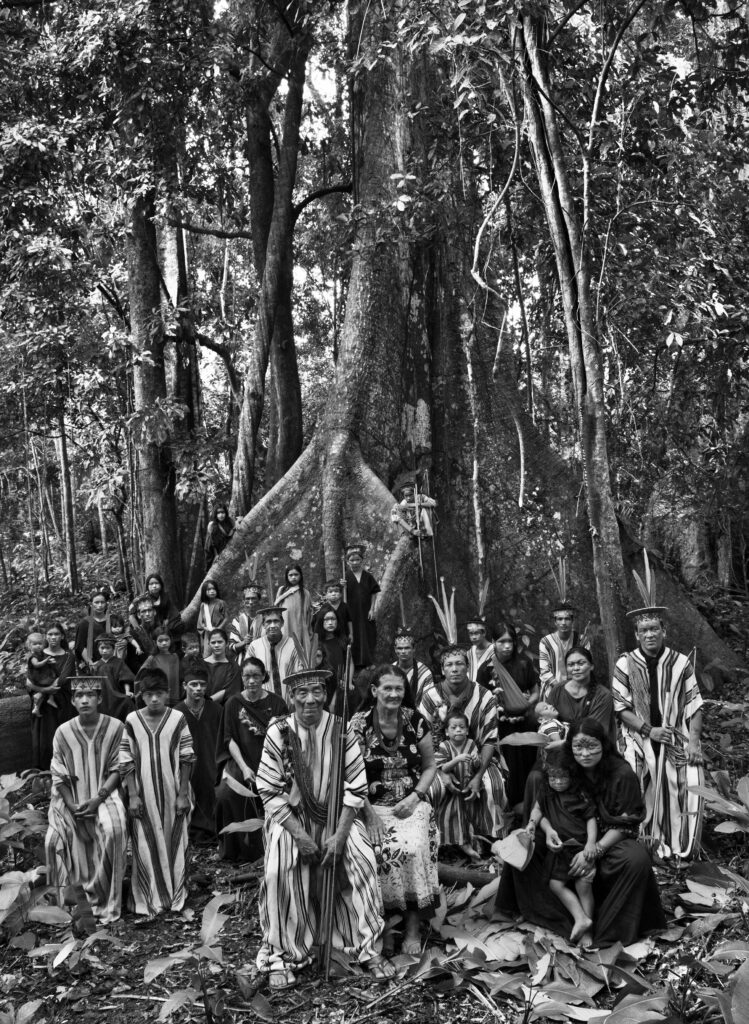
Since the adoption of the Brazilian Constitution of 1988, 26% of the Amazon – equivalent to 13% of the entire Brazilian territory – has been reserved exclusively for indigenous communities, recalls the photographer. In this immensity, Salgado recorded majestic natural events through air, such as aerial rivers and Amazonian mountains, and water, through weeks of navigating the Rio Negro. Back on land he accompanied tribes in hunting, fishing and in rituals where his presence was allowed. “In most villages, the density of the bush completely blocks the view from a distance. The sky itself is framed by giant trees. When members of indigenous communities go hunting or fishing, they completely disappear within seconds. Therefore, whenever I accompanied them, I had the habit of keeping close to their heels, not losing sight of them for a second for fear of losing myself”.
Inside the villages, a mobile studio was also improvised and called those who felt comfortable to have their portrait taken. Despite the artificiality, the smoothness of the canvas – as opposed to the texture of the vegetation – provided a more appropriate field for traditional objects and customs to surface without distractions. Meanwhile, his journey up the Rio Negro and through the Anavilhanas National Park took him to the mouth of the Jaú River, cruising at reduced speed, just a few meters from the trees. “We had such heavy rain that the boat stopped due to a total lack of visibility. The cloud formations were so beautiful, so voluminous and so dramatic that they made us feel the size of our insignificance.” Even though piranas and giant pythons prevented him from diving into the Rio Negro, Salgado managed to bathe in the humidity of the aerial rivers – torrents of steam that form over the forest –, photographing them from within. From above, the photographer beheld the dimension of the largest set of mountains in Brazil: “The Amazon we were used to was a flat territory, with rivers that snaked through it; a part of the Amazon really is a big plain, but a considerable part of it is formed by an incredible portion of mountains”. Such aerial landscapes, rare in photographic documentation, were explored with the aid of the Brazilian army, which allowed Salgado to immerse himself in their missions. According to him, the distances are such that only the military, who cover the entire country and who have dozens of scattered bases, can reach these places.
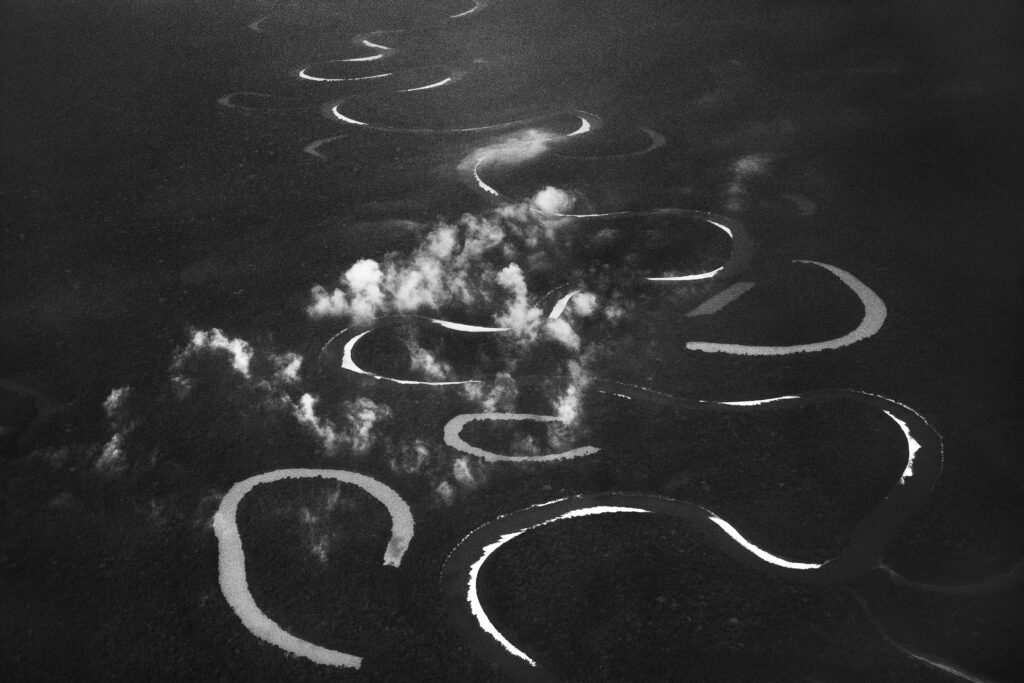
“The Brazilian army has a very interesting characteristic in the Amazon: the vast majority of the body, which are the soldiers, the army basis, is indigenous”, says Salgado. “They know the forest, they come from the forest. And what is the function of an army? It is to defend national sovereignty. And the Amazon, the biome, represents almost 50% [49.29%] of the Brazilian territory”. For Salgado, the level of banditry in the current Amazon is worrying and makes such a defense [from the army] essential. “The current government, which is related to the militias, has facilitated [the coming of] and brought violence [themselves] to the Amazon in an incredible way.” He warns, however, of the differences between the young officers who are in the forest and the so-called ‘reserve military’. “That is a contradiction, you see, the participation of officers in the current predatory government, mainly reserve officers of the Brazilian army – who are old generals still related to the dictatorship, to a certain right-wing idea. There is a brutal difference with the new officers, with the basis, which are the soldiers, who are there, inside the Amazon defending it”.
The photographer recalls that, during his career, his contact with Brazilian troops took place more outside the country than inside the national territory, whether in United Nations missions in Angola, or in the Bosnian War, where soldiers participated unarmed as observers of the UN itself. This contact created in him an admiration that compels Salgado to make the following political request: “For me, the Brazilian left will have to change [in relation to the army]. The Brazilian left still condemns the Brazilian army [for its participation in the 1964 coup and dictatorship], but I think it would have to change, it would have to make a move towards the army, because by excluding the army and excluding itself from the army, it leaves place for the extreme right to enter there as it did with the Bolsonaro administration”. In Salgado’s view, the defense of this movement comes from the essentiality of the armed forces in all countries of the world; “it’s a technical body that the country depends on, which is an important strong institution that has to be neutral”.
A return to the planet
At 78, Salgado believes “in the idea of comprehensiveness, of community; the opponent is not an enemy that you have to kill in radicalism, I think the opponent is a future partner that you have to bring, to conquer”.
On the other hand, an injection of a certain type of more radical activism can be substantial to the issues of the environment and its preservation, after all “neutral ecology becomes an accomplice of the injustice of a world where healthy food, clean water, pure air and silence are not the rights of everyone but the privileges of the few who can afford them”, as suggested by Eduardo Galeano. In this sense, unbridled modernization worried both of them, “today we no longer belong to our planet…” laments Salgado, highlighting the level of dependence of an urbanized society on the expressway world. “We don’t know how to live without the assistance that was created around us, we lost this ability in relation to the earth, in relation to the planet and I think we would have to organize the return to the planet, we would have to learn from the planet”.
In Amazônia, is Salgado’s criticism sufficiently categorical? By choosing to highlight only life in the forest, does the photographer run the risk of presenting it as immortal?
“The Amazon is still a paradise, it is still one of the most wonderful places on the planet, and it has to be divine. The Amazon is paradise and paradise has to be defended, we cannot throw paradise into hell”, he defends. But apart from the noble merit of the question, perhaps the dilemma lies in the possibility that the images – sublime, with beautiful striking contrasts, with tormented and imposing skies – do not trigger the impulse to do something about it so that the biome does not travel the opposite of Dante’s path. Possibly, the danger of presenting the biome as a slice of the Sacred is that, in this kind of narrative, even after the end of times there is still the second coming of the savior. Following this line, the threat of messianic discourse grows. Passivity is not thought to be so parlous. Commitment demanding becomes a gentleman’s agreement.
His Instituto Terra, founded in 1998 with his wife and partner, architect and environmentalist Lélia Wanick Salgado, meets the urgency that another Brazilian biome requires, the Atlantic Forest. The institute is located in the city of Aimorés, in Minas Gerais, where the photographer’s family’s old cattle farm was located and, in just over 20 years, it made possible the planting of more than 2 million tree seedlings (using more than 290 native species from the Atlantic Forest) within the Bulcão Farm, an area recognized as a private natural heritage reserve (RPPN). During that time, the institute also invested in the recovery of springs in the Rio Doce Hydrographic Basin and in the production of native seedlings – 6 million so far – for its own and third-party reforestation.
Furthermore, by 2023, Terra hopes to have completed the first phase of its Atlantic Forest gene bank project. The program started in 2018 and its objective is to guarantee the continuity of species found in Vale do Rio Doce, highlighted by the institute itself as “an area of highly degraded Atlantic Forest with the threat of extinction of several native species”. The logistics and progress of the enterprise are attributed to Lélia, who signs the expography of the recent show at Sesc Pompeia, as well as the editing, design and production of the book Amazônia. It was even her idea that the exhibition should be filled with music. “Amazon is a very musical region, the indigenous people are very musical, they sing a lot, there are many festivities and many instruments. Lélia traveled a lot in the Amazon with me and she absolutely wanted us to bring music to the exhibition”.
With the purpose of creating the soundtrack to serve as the guiding thread of the exhibition, Jean-Michel Jarre, a popular composer and producer in France (considered a pioneer of electronic music), had access to the collections of the Museum of Ethnology in Geneva, which recovered sounds from the entire Amazon for years. Indigenous songs and instruments also appear in another sound experience, the projection with portraits of members of the tribes that Salgado visited. The Pau Brasil group, from São Paulo was in charge of the music in this space along with Marlui Miranda. A final projection of landscapes pays homage to maestro Heitor Villa-Lobos by playing “Erosão (Origin of the Amazon River)”.
At the end of Amazônia, Salgado appeals: “To survive as a culture, these peoples cannot be mere objects of anthropological interest. [They] must contribute and also benefit from the sustainable development of the Amazon through its extraordinary botanical wealth, exotic spices, nuts or plants with medicinal and cosmetic properties.” In this last address in Amazônia, the defense of indigenous rights and the preservation of the biome goes hand in hand with pragmatism, considering that “according to satellite images, – in contrast to private lands, or gigantic national parks and even public lands owned by the State – there were very few occurrences of fire or acts of deforestation within the indigenous reserves”. And as the photographer himself had brought to attention before: “When a part of the forest is cut down, it is as if that forest has no value… We throw it on the ground, set it on fire, destroy it to establish livestock”. And how much does the forest cost? “The price that is necessary to put in place to rebuild that hectare of forest”, he replies. “If 10,000 hectares of forest are cut down, you are cutting down more than 200 million dollars. Never in the history of this rural property – which will settle where the forest was destroyed – will it be produced the amount of capital that was destroyed”.
Read in Portuguese here.




